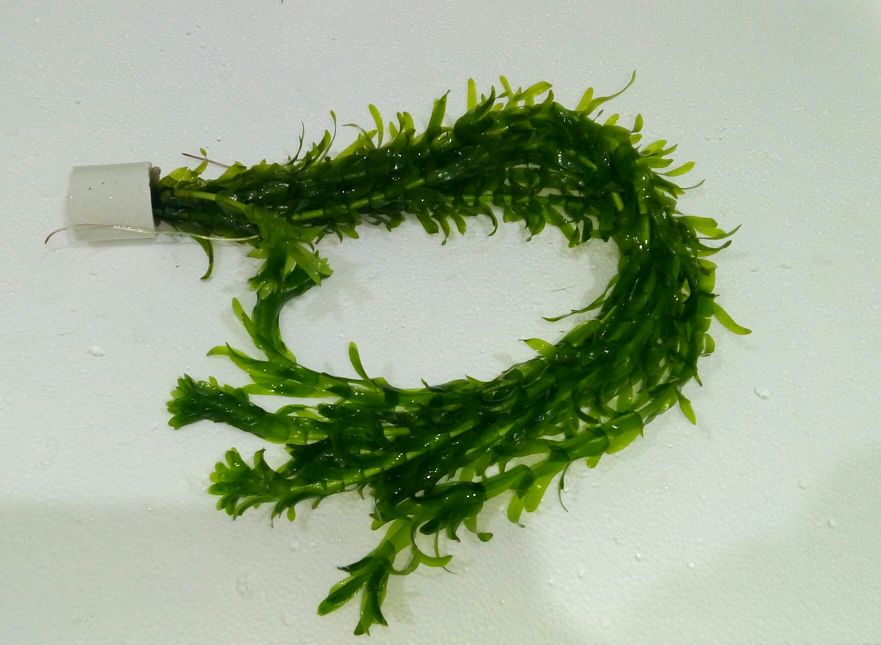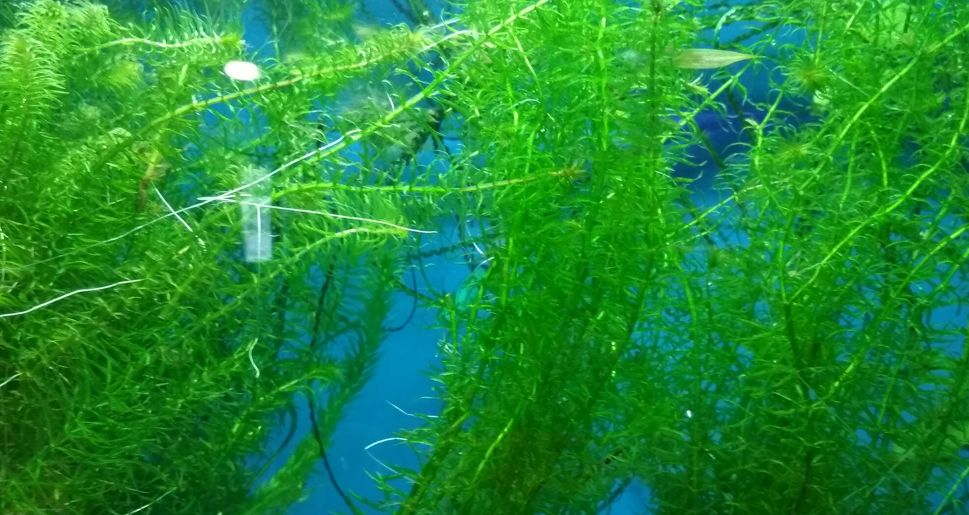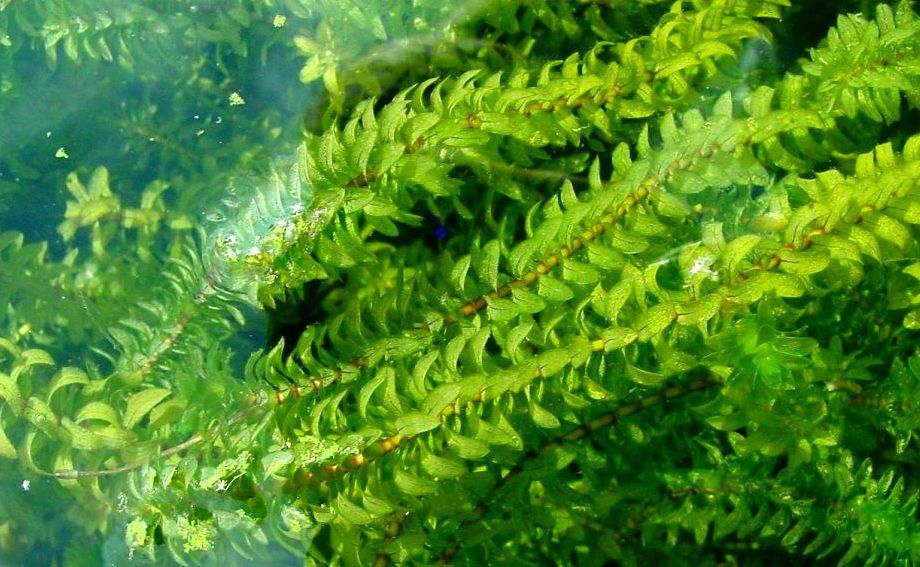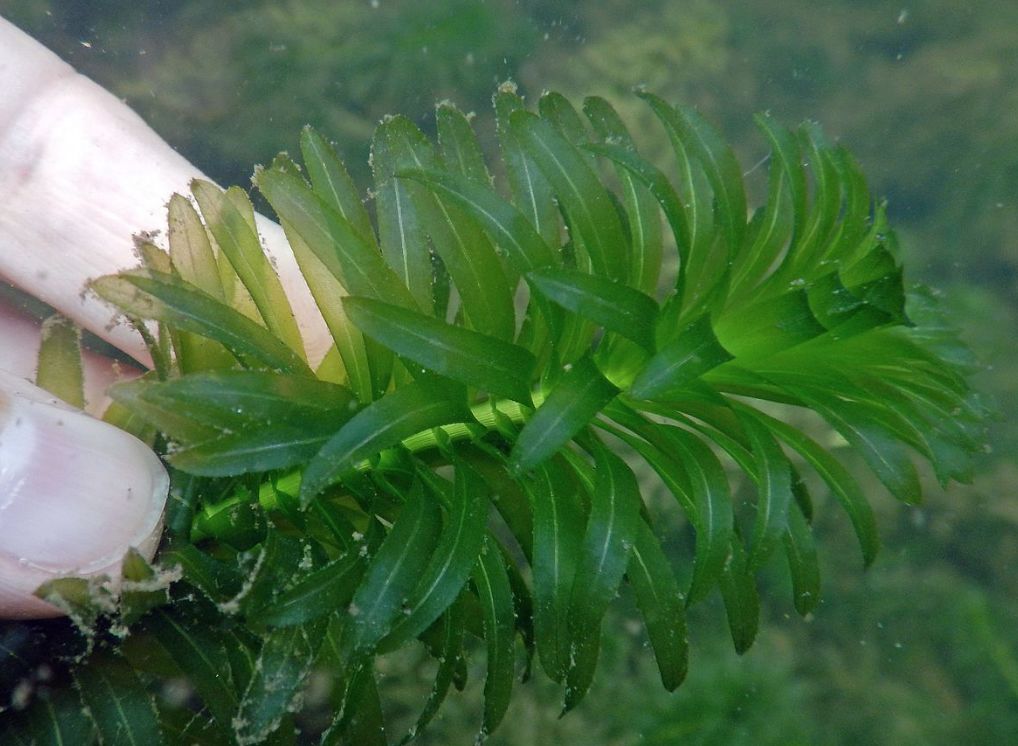Brazilian waterweed (Egeria densa or Elodea densa, Anacharis is an outdated name of the genus, but in the USA and in Canada it is still used) is one of the oldest and the most renowned aquarium plants. Egeria densa is a good plant for beginner aquarists, besides its high growth rate it helps easily settle a biological balance in a new tank.

Contents
Plant Habitat in the wild
The habitat is in Argentina, Brazil and Uruguay. Nowadays, the plant has widely spread over Eurasia, North America and Oceania. Egeria densa prefers fresh water basins with lentic or slowly flowing water. It thrives in freshwater habitats, including rivers, lakes, streams, and ponds. In its natural habitat, Egeria densa can be found submerged, rooted in the substrate or free-floating, depending
In its native environment, Egeria densa often grows in dense stands, forming lush underwater forests. It plays a vital role in the ecosystem by providing oxygen, shelter, and food for various aquatic organisms. The plant’s dense growth also helps in reducing nutrient levels and controlling algae blooms.
Due to the ability to grow very quickly and tightly fill the waters, Egeria densa has got the name of a ‘Brazilian waterweed’.
In some areas when the plant gets into the natural bodies of water, it becomes an invasive plant species. As an invasive species, Egeria densa can outcompete native aquatic plants and disrupt local ecosystems. It has a high growth rate, quickly forming dense mats that can shade out native vegetation and reduce biodiversity. This can negatively impact native plant species, alter water flow dynamics, and degrade habitat quality for native fish and other aquatic organisms.
As an invasive species, Egeria densa has been introduced to various parts of the world, including North America, Europe, and Asia. It can thrive in a range of water conditions and has become a popular choice for aquariums and water gardens due to its aesthetic appeal and water purifying properties.
From aquariums it often gets into the open waters, where it quickly forms thick vegetation just of its kind. Chemical methods are the most efficient ones when getting rid of it. In Brazil, for example, this plant disrupts the work of hydroelectric power stations.
It is important for aquarium hobbyists and water garden enthusiasts to be aware of the potential invasive nature of Egeria densa and to properly dispose of any excess or unwanted plant material to prevent its accidental introduction into natural water bodies.
Description
Egeria densa is a plurannual dioecious aquatic plant. It grows a long stem, which provided with favorable conditions can become up to 3 m long and more. The plant has an upright enrooted stem up to 5 m long and 1-3 mm thick; it is cylindrical, straight or branchy with very short internodes.
The leaves are gathered into verticils from 4 to 8 leaves in each (the bottom leaves are often opposite and there are 3 of them in a verticil). The leaves are linear with serrulate edges 1-4 cm long and 2-5 mm wide.
On the stem there are 4 short lanceolate leaves in each internode (verticil). The distance between the verticils is approximately the same along the whole stem, but it decreases towards the stem end and there is a ‘hat’ made of leaves there.
From the first sight the plant lamina is smooth with flat edges, but if you magnify the image you’ll see that the edges are actually sawtooth ones.
| Feature | Description |
|---|---|
| Common Names | Elodea densa, Brazilian waterweed, Anacharis |
| Family | Hydrocharitaceae |
| Native Range | South America, specifically the Amazon River basin |
| Invasive Status | Considered invasive in many regions outside of its native range |
| Growth Habit | Submerged aquatic plant |
| Growth Rate | Fast-growing, capable of reaching lengths up to 3 meters (9.8 feet) |
| Light Requirements | Moderate to high light, but can tolerate lower light levels |
| Water Temperature | Tolerates a wide range, typically between 15°C to 30°C (59°F to 86°F) |
| Reproduction | Primarily reproduces through fragmentation, where broken stems can root |
| Environmental Impact | Can outcompete native vegetation, reduce biodiversity, and alter habitats |
| Control Measures | Mechanical removal, herbicide treatments, biological control agents |
| Preferred Habitat | Freshwater habitats such as rivers, lakes, streams, and ponds |
| Ecosystem Benefits | Provides oxygen, shelter, and food for aquatic organisms |
| Aquarium Use | Popular choice for aquariums and water gardens due to aesthetic appeal |

Difficulties in keeping
Egeria densa belongs to the most unpretentiousness and easy in care aquarium plants. The only requirement you should meet is – to provide the tank with the plant with sufficient illumination level. Otherwise, the bottom leaves of the plant (which usually get less light) may start to rot and fall off.
Simple process of Elodea densa cultivation explains its popularity. The plant can both float near the water surface and stick to the tank bottom. It can grow almost at any conditions at a wide temperature and hydrochemical parameters range. Though, we should mention that the higher the water temperature is, the lower is the growth rate.
Anacharis actively absorbs saturated organic substances, which is the reason why it grows so actively.
By this the plant suppresses the growth of the latter and enriches the water with oxygen more intensively, than most of other plants. Therefore, this plant can be considered a perfect choice for beginner aquarists.

Care and keeping in a tank
In the 19th century when there were just early days of aquarium hobby and any aquarium equipment allowing to maintain stable water parameters was completely absent, Anacharis was a very popular plant, due to its unpretentiousness.
As a rule you can see the plant in tanks of beginner aquarists. It is true, that in spring and summer provided with bright illumination, Anacharis perfectly grows in a house pond even without rooting, CO2 supply and fertilizers and during the season it fills the whole volume.
By absorbing nitrates the plant sufficiently cleans the water and in doing so it stops unwanted algae from growing in the tank.
Anacharis perfectly fits tanks with live-bearing fishes and its thickly growing leaves serve as a perfect shelter for the fish juveniles. In the numerous articles it is mentioned about the poisonous moisture of the plant especially for the fish juveniles, that’s why you should avoid trimming the plant too much in the nursery tanks. As for the adult fishes – Anacharis moisture is not poisonous for them.
Another thing is, that this moisture may have a suppressing impact on growth rate of some delicate aquarium plants. Therefore, when trimming and weeding Anacharis vegetation, you should remove such a sensitive plant from the tank.
Water parameters
Egeria densa can thrive in a temperature range of approximately 15°C to 30°C (59°F to 86°F). It is adaptable to different water temperatures within this range.
Water hardness and pH have no impact on the plant, since Anacharis grows both in very soft and hard water. It is important to avoid abrupt changes of the growing conditions, since this may cause even the plant death.
Lighting
The most crucial requirement that should be met for Anacharis to develop in your tank successfully is the illumination level. The lighting should be bright enough and a uniform one.
Egeria densa requires moderate to high lighting levels for optimal growth. Adequate lighting is essential for photosynthesis and healthy plant development. Providing a full spectrum of light, including both red and blue wavelengths, is beneficial for this plant.
CO2
While Egeria densa can grow in setups without additional CO2 supplementation, it can benefit from the presence of carbon dioxide. CO2 injection or the addition of liquid carbon sources can promote robust growth and prevent nutrient deficiencies.
Nutrients
The plant can easily do without any additional fertilization provided with sufficient amount of organic substances in the tank. It can utilize nutrients present in the water column, but supplementation with liquid fertilizers or root tabs can enhance its growth and overall health.
Substrate
Brazilian waterweed, can be grown successfully in a variety of substrates. While it can be rooted in the substrate, Egeria densa is also known for its ability to grow as a free-floating plant.
After you put it into the substrate, it will strike thin white roots and stick to the bottom using them. You may also leave the sprigs to float in the tank water and, eventually, after reaching the necessary size, they will strike roots themselves.

How to plant egeria densa
To plant Egeria densa (Brazilian waterweed), follow these steps:
- Prepare the aquarium: Fill the aquarium with water, ensuring it is at the desired level and temperature for your aquatic setup. If you are using a substrate, distribute it evenly across the bottom of the aquarium.
- Prepare the plants: Trim the Egeria densa stems to your desired length. You can cut them into smaller sections, typically 5-10 cm (2-4 inches) long, to encourage branching and denser growth.
- Planting options:
a. Planting in substrate: If you are planting Egeria densa in a substrate, use your fingers or planting tweezers to create small holes in the substrate. Insert the trimmed stems into the holes, ensuring the roots are covered and the stems are secure. Space the plants according to your desired density, keeping in mind their growth potential.
b. Floating: Egeria densa can also be grown as a floating plant. Simply release the trimmed stems into the water, and they will naturally float. This method is suitable for low-tech setups or temporary situations.
Remember that Egeria densa has the potential to grow rapidly, so it is essential to regularly manage its growth and prevent it from becoming invasive or overrunning the aquarium.
Propagation
Anacharis propagates rather quickly by means of cutting its stem. If you’ve decided to cultivate the plant, it is desirable that the spring is at least 10 cm long.
- Stem Cutting: This is the most common and straightforward method of propagation. Trim healthy stems of Egeria densa to a desired length, typically 5-10 cm (2-4 inches). Make sure each cutting has at least a few leaves and nodes. Remove the lower leaves from the cutting, leaving only a few at the top. Plant the stem cuttings in the substrate, ensuring that the nodes are buried and the leaves are above the surface. Over time, the cuttings will develop roots and new shoots, establishing new plants.
- Fragmentation: Egeria densa can also propagate through natural fragmentation. As the plant grows, it may develop side shoots or branches that become detached or break off. These fragments can be collected and planted in the substrate or left to float in the water. They will develop roots and grow into new plants.
Sources: